171 results found for 'System'. Prev |1|2|3|4|5|6|7 | Next | View 100 per page
Low relevance matches: 115 other results may be of interest to you. Show low relevance matches
Earth Moon Sun - The Earth is part of a system of planets orbiting around a star (the sun) ACSSU150 Year 8 Biological Sciences
Organ Systems - Multi-cellular organisms contain systems of organs that carry out specialised functions that enable them to survive and reproduce ACSSU155 Year 8 Physical Sciences
Energy Forms - Energy appears in different forms, including movement (kinetic energy), heat and potential energy, and energy transformations and transfers cause change within systems ACSSU175 Year 9 Biological Sciences
Organ Systems - Multi-cellular organisms rely on coordinated and interdependent internal systems to respond to changes to their environment ACSSU176 Year 9 Biological Sciences
Ecology - Ecosystems consist of communities of interdependent organisms and abiotic components of the environment; matter and energy flow through these systems ACSSU179 Year 9 Chemical Sciences
Chemical Reactions - Chemical reactions, including combustion and the reactions of acids, are important in both non-living and living systems and involve energy transfer ACSSU188 Year 10 Earth and Space Sciences
Universe - The universe contains features including galaxies, stars and solar systems and the Big Bang theory can be used to explain the origin the universe ACSSU189 Year 10 Earth and Space Sciences
Global Systems - Global systems, including the carbon cycle, rely on interactions involving the biosphere, lithosphere, hydrosphere and atmosphere ACSSU190 Year 10 Physical Sciences
Energy Conservation - Energy conservation in a system can be explained by describing energy transfers and transformations ACSBL019 Year 11 Biodiversity and the interconnectedness of life
Describing biodiversity - Ecosystems are diverse, composed of varied habitats and can be described in terms of their component species, species interactions and the abiotic factors that make up the environment ACSBL029 Year 11 Biodiversity and the interconnectedness of life
Ecosystem dynamics - Models of ecosystem interactions (for example, food webs, successional models) can be used to predict the impact of change and are based on interpretation of and extrapolation from sample data (for example, data derived from ecosystem surveying techniques ACSCH061 Year 11 Molecular interactions and reactions
Aqueous solutions and acidity - Water is a key substance in a range of chemical systems because of its unique properties, including its boiling point, density in solid and liquid phases, surface tension, and ability to act as a solvent ACSCH091 Year 12 Equilibrium acids and redox reactions
Chemical equilibrium systems - Over time, physical changes and reversible chemical reactions reach a state of dynamic equilibrium in a closed system, with the relative concentrations of products and reactants defining the position of equilibrium ACSCH096 Year 12 Equilibrium acids and redox reactions
Chemical equilibrium systems - Equilibrium position can be predicted qualitatively using equilibrium constants ACSCH097 Year 12 Equilibrium acids and redox reactions
Chemical equilibrium systems - Acids are substances that can act as proton (hydrogen ion) donors and can be classified as monoprotic or polyprotic depending on the number of protons donated by each molecule of the acid ACSCH098 Year 12 Equilibrium acids and redox reactions
Chemical equilibrium systems - The strength of acids is explained by the degree of ionisation at equilibrium in aqueous solution, which can be represented with chemical equations and equilibrium constants (Ka) ACSCH099 Year 12 Equilibrium acids and redox reactions
Chemical equilibrium systems - The relationship between acids and bases in equilibrium systems can be explained using the Brønsted Lowry model and represented using chemical equations that illustrate the transfer of hydrogen ions ACSCH100 Year 12 Equilibrium acids and redox reactions
Chemical equilibrium systems - The pH scale is a logarithmic scale and the pH of a solution can be calculated from the concentration of hydrogen ions; Kw can be used to calculate the concentration of hydrogen ions from the concentration of hydroxide ions in a solution ACSCH101 Year 12 Equilibrium acids and redox reactions
Chemical equilibrium systems - Acidbase indicators are weak acids or bases where the acidic form is of a different colour to the basic form ACSCH102 Year 12 Equilibrium acids and redox reactions
Chemical equilibrium systems - Volumetric analysis methods involving acidbase reactions rely on the identification of an equivalence point by measuring the associated change in pH, using chemical indicators or pH meters, to reveal an observable end point ACSPH016 Year 11 Thermal nuclear and electrical physics
Heating processes - Heat transfer occurs between and within systems by conduction, convection and/or radiation ACSPH022 Year 11 Thermal nuclear and electrical physics
Heating processes - Two systems in contact transfer energy between particles so that eventually the systems reach the same temperature; that is, they are in thermal equilibrium ACSPH064 Year 11 Linear Motion and Waves
Linear motion and force - Momentum is a property of moving objects; it is conserved in a closed system and may be transferred from one object to another when a force acts over a time interval ACSPH065 Year 11 Linear Motion and Waves
Linear motion and force - Energy is conserved in isolated systems and is transferred from one object to another when a force is applied over a distance; this causes work to be done and changes to kinetic and/or potential energy of objects ACSPH073 Year 11 Linear Motion and Waves
Waves - A mechanical system resonates when it is driven at one of its natural frequencies of oscillation; energy is transferred efficiently into systems under these conditions ACSBL052 Year 11 Biodiversity and the interconnectedness of life
Ecosystem dynamics - Photosynthesis is a biochemical process that in plant cells occurs in the chloroplast and that uses light energy to organic compounds; the overall process can be represented as a balanced chemical equation ACSBL053 Year 11 Biodiversity and the interconnectedness of life
Ecosystem dynamics - Cellular respiration is a biochemical process that occurs in different locations in the cytosol and mitochondria and metabolises organic compounds, aerobically or anaerobically, to release useable energy in the form of ATP; the overall process can be repr ACSPH021 Year 11 Thermal nuclear and electrical physics
Heating processes - Change of state involves internal energy changes to form or break bonds between atoms or molecules; latent heat is the energy required to be added to or removed from a system to change the state of the system

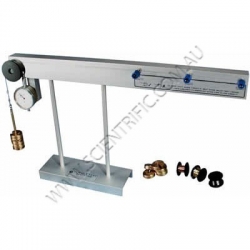
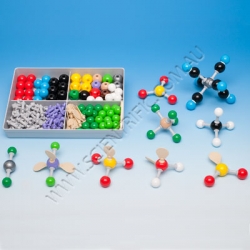
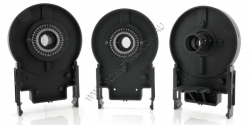
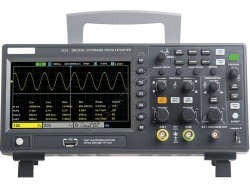
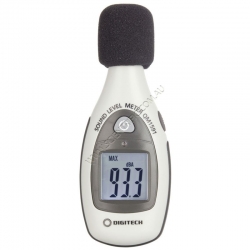
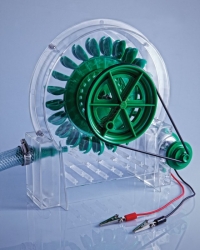
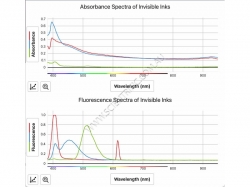

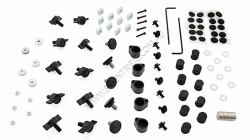
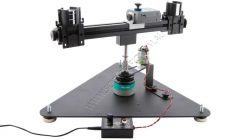
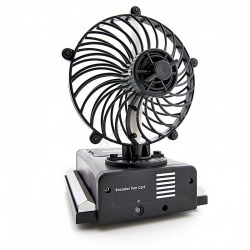
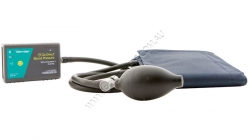



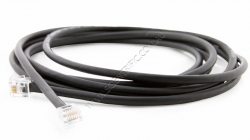

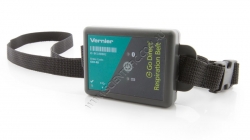
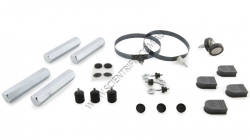
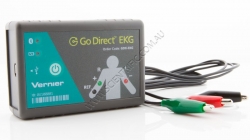
171 results found for 'System'. Prev |1|2|3|4|5|6|7 | Next | View 100 per page
Low relevance matches: 115 other results may be of interest to you. Show low relevance matches
Curriculum resources related to 'System'
ACSSU078 Year 5 Earth and Space SciencesEarth Moon Sun - The Earth is part of a system of planets orbiting around a star (the sun) ACSSU150 Year 8 Biological Sciences
Organ Systems - Multi-cellular organisms contain systems of organs that carry out specialised functions that enable them to survive and reproduce ACSSU155 Year 8 Physical Sciences
Energy Forms - Energy appears in different forms, including movement (kinetic energy), heat and potential energy, and energy transformations and transfers cause change within systems ACSSU175 Year 9 Biological Sciences
Organ Systems - Multi-cellular organisms rely on coordinated and interdependent internal systems to respond to changes to their environment ACSSU176 Year 9 Biological Sciences
Ecology - Ecosystems consist of communities of interdependent organisms and abiotic components of the environment; matter and energy flow through these systems ACSSU179 Year 9 Chemical Sciences
Chemical Reactions - Chemical reactions, including combustion and the reactions of acids, are important in both non-living and living systems and involve energy transfer ACSSU188 Year 10 Earth and Space Sciences
Universe - The universe contains features including galaxies, stars and solar systems and the Big Bang theory can be used to explain the origin the universe ACSSU189 Year 10 Earth and Space Sciences
Global Systems - Global systems, including the carbon cycle, rely on interactions involving the biosphere, lithosphere, hydrosphere and atmosphere ACSSU190 Year 10 Physical Sciences
Energy Conservation - Energy conservation in a system can be explained by describing energy transfers and transformations ACSBL019 Year 11 Biodiversity and the interconnectedness of life
Describing biodiversity - Ecosystems are diverse, composed of varied habitats and can be described in terms of their component species, species interactions and the abiotic factors that make up the environment ACSBL029 Year 11 Biodiversity and the interconnectedness of life
Ecosystem dynamics - Models of ecosystem interactions (for example, food webs, successional models) can be used to predict the impact of change and are based on interpretation of and extrapolation from sample data (for example, data derived from ecosystem surveying techniques ACSCH061 Year 11 Molecular interactions and reactions
Aqueous solutions and acidity - Water is a key substance in a range of chemical systems because of its unique properties, including its boiling point, density in solid and liquid phases, surface tension, and ability to act as a solvent ACSCH091 Year 12 Equilibrium acids and redox reactions
Chemical equilibrium systems - Over time, physical changes and reversible chemical reactions reach a state of dynamic equilibrium in a closed system, with the relative concentrations of products and reactants defining the position of equilibrium ACSCH096 Year 12 Equilibrium acids and redox reactions
Chemical equilibrium systems - Equilibrium position can be predicted qualitatively using equilibrium constants ACSCH097 Year 12 Equilibrium acids and redox reactions
Chemical equilibrium systems - Acids are substances that can act as proton (hydrogen ion) donors and can be classified as monoprotic or polyprotic depending on the number of protons donated by each molecule of the acid ACSCH098 Year 12 Equilibrium acids and redox reactions
Chemical equilibrium systems - The strength of acids is explained by the degree of ionisation at equilibrium in aqueous solution, which can be represented with chemical equations and equilibrium constants (Ka) ACSCH099 Year 12 Equilibrium acids and redox reactions
Chemical equilibrium systems - The relationship between acids and bases in equilibrium systems can be explained using the Brønsted Lowry model and represented using chemical equations that illustrate the transfer of hydrogen ions ACSCH100 Year 12 Equilibrium acids and redox reactions
Chemical equilibrium systems - The pH scale is a logarithmic scale and the pH of a solution can be calculated from the concentration of hydrogen ions; Kw can be used to calculate the concentration of hydrogen ions from the concentration of hydroxide ions in a solution ACSCH101 Year 12 Equilibrium acids and redox reactions
Chemical equilibrium systems - Acidbase indicators are weak acids or bases where the acidic form is of a different colour to the basic form ACSCH102 Year 12 Equilibrium acids and redox reactions
Chemical equilibrium systems - Volumetric analysis methods involving acidbase reactions rely on the identification of an equivalence point by measuring the associated change in pH, using chemical indicators or pH meters, to reveal an observable end point ACSPH016 Year 11 Thermal nuclear and electrical physics
Heating processes - Heat transfer occurs between and within systems by conduction, convection and/or radiation ACSPH022 Year 11 Thermal nuclear and electrical physics
Heating processes - Two systems in contact transfer energy between particles so that eventually the systems reach the same temperature; that is, they are in thermal equilibrium ACSPH064 Year 11 Linear Motion and Waves
Linear motion and force - Momentum is a property of moving objects; it is conserved in a closed system and may be transferred from one object to another when a force acts over a time interval ACSPH065 Year 11 Linear Motion and Waves
Linear motion and force - Energy is conserved in isolated systems and is transferred from one object to another when a force is applied over a distance; this causes work to be done and changes to kinetic and/or potential energy of objects ACSPH073 Year 11 Linear Motion and Waves
Waves - A mechanical system resonates when it is driven at one of its natural frequencies of oscillation; energy is transferred efficiently into systems under these conditions ACSBL052 Year 11 Biodiversity and the interconnectedness of life
Ecosystem dynamics - Photosynthesis is a biochemical process that in plant cells occurs in the chloroplast and that uses light energy to organic compounds; the overall process can be represented as a balanced chemical equation ACSBL053 Year 11 Biodiversity and the interconnectedness of life
Ecosystem dynamics - Cellular respiration is a biochemical process that occurs in different locations in the cytosol and mitochondria and metabolises organic compounds, aerobically or anaerobically, to release useable energy in the form of ATP; the overall process can be repr ACSPH021 Year 11 Thermal nuclear and electrical physics
Heating processes - Change of state involves internal energy changes to form or break bonds between atoms or molecules; latent heat is the energy required to be added to or removed from a system to change the state of the system
Products related to 'System'
IEC Boyles Charles Law Combination 1m No Mercury
IEC BOYLES/CHARLES LAW COMBINATION 1m NO MERCURY
The IEC Boyle's Law and Charles' Law combined Apparatus is the classic arrangement consisting of an open and a closed glass tube joined by a rubber hose and filled with mercury (not supplied). The system is mounted on a 1m ...
Order code: MF0340-101
IEC Boyles Law Syringe Type PSSC
IEC BOYLES LAW SYRINGE TYPE
The IEC syringe type Boyle's Law apparatus is convenient and low cost but only approximate results are to be expected due to friction losses.
A commercial plastic syringe is used and weights are placed on the system to compress the gas to the...
Order code: MF0350-001

IEC Lever and Fulcrum 1m long with Weights and Hangers
IEC LEVER AND FULCRUM 1m LONG WITH WEIGHT HANGERS
The IEC Lever and Fulcrum is a simple demonstration where a metre rule balances at its mid point on a vertical pillar mounted on a base. It shows that when the weight x the distance (moment) on one side of a pivot point eq...
Order code: MF1998-001



IEC Tensile Test Machine
IEC TENSILE TEST MACHINE
The IEC Tensile Test Machine is a simple but effective system for measuring the tensile strength of metals. Wire is used so that the forces involved are small and can easily be applied in the classroom. The machine provides three different anchor ...
Order code: MF4665-001

Molymod Valence Shell Electron Pair Repulsion Kit
The Molymod® Valence Shell Electron Pair Repulsion (VSEPR) kit is ideal for teaching about molecular shapes. Use the VSEPR kit to make linear, trigonal planar, tetrahedral, trigonal bipyramidal and octahedral structures plus at least14 VSEPR structures.
Coloured links represen...
Order code: MKO-VSEPR-14


IEC Banana Plug Adaptor 2mm Banana Plug to 4mm Socket
IEC BANANA PLUG ADAPTOR 2mm BANANA PLUG TO 4mm SOCKET
An adaptor with a 2mm banana plug at one end and 4mm banana socket on the other allowing the 2mm banana plug system of the IEC Electronics Kits to connect to 4mm equipment.
Order code: PA0207-001
IEC Banana Plug Adaptor 4mm Banana Plug to 2mm Socket
IEC BANANA PLUG ADAPTOR 4mm BANANA PLUG TO 2mm SOCKET
An adaptor with a 4mm banana plug at one end and 2mm banana socket on the other allowing the 2mm banana plug system of the IEC Electronics Kits to connect to 4mm equipment.
Order code: PA0207-010

Vernier Polariser Analyser Kit
VERNIER POLARISER/ANALYSER KIT
The Polariser/Analyser set extends the Optics Expansion Kit to allow students to study polarisation of light. Malus' Law experiments are easy, detailed and accurate using a RMV-BTD Vernier Rotary...
Order code: PAK-OEK

Digital Storage Oscilloscope
DIGITAL STORAGE OSCILLOSCOPE.
This compact bench top oscilloscope features 2 channels with real-time sampling modes of 1GSa/s (25GS/s equivalent sampling rate). The 7” 24-bit true colour TFT display offers a crisp display of both waveforms. The screen can be set up to sim...
Order code: SC2288

dB Sound Level Meter Micro
With a range of 40-130dB, this little meter is ideal for environmental, safety and sound system testing. It has a fast response time for transient measurements and is A-weighted to suit the human hearing range. Powered by a 9 volt battery which is included.
Specifications
Order code: SC5017S



Hydro-Electric Generator or Dynamo
This versatile and well made Hydro-Electric Generator (Dynamo) brings hydropower right into your classroom.
Operation:
The Hydro-Electric connects to the tap and the local water supply so that students can directly witness the conversion of water into electricity.
Pro...
Order code: SCHEG

Vernier Spectral Analysis
Free download
VERNIER SPECTRAL ANALYSIS
Collect, analyse and share spectrometer data with Vernier's free app for Chrome™, iOS®, Android™, Windows® and macOS™. Vernier's free Spectral Analysis app makes it easy to incorporate spectroscopy into your biology and chemistry labs. Using the ...

Vernier Anti-Roll Pegs
VERNIER ANTI-ROLL PEGS
These rubbery black pegs fit into the hole on the bottom of a Vernier dynamics cart end cap to prevent the cart from rolling when placed on a flat surface such as a lab bench. When placed on a Vernier dynamics track, the peg will move in the center ...
Order code: VDS-ARP10

Vernier VDS Replacement Parts Kit
VERNIER VDS REPLACEMENT PARTS KIT
The Vernier Dynamics System Replacement Parts Kit includes most of the small parts such as nuts, bolts, washers and screws, for 5 Vernier Dynamics Systems.
Included:
• 10 foam inserts – used to hold magnets in teardrop-shaped e...
Order code: VDS-RPK

Vernier Go Direct Centripetal Force System
VERNIER GO DIRECT CENTRIPETAL FORCE SYSTEM
Vernier's Go Direct Centripetal Force Apparatus and Go Direct Force and Acceleration Sensor make an ideal combination to explore rotational dynamics.
Students can conduct a variety of rotational dynamics investigations with a si...
Order code: GDX-CFAF

Vernier Fan Motion Encoder Cart
VERNIER ENCODER FAN CART
The Encoder Fan Cart is a large fan on a light-weight cart. It offers students the ability to perform kinematics and dynamics experiments with constant acceleration, variable mass, variable thrust and variable thrust angle. The cart includes a Mot...
Order code: CART-FEC

Vernier Go Direct Blood Pressure Sensor
VERNIER GO DIRECT BLOOD PRESSURE SENSOR
Vernier's Go Direct™ Blood Pressure Sensor is affordable, non-invasive and measures systolic, diastolic and mean arterial human blood pressure using the oscillometric method.
Designed for versatility, Vernier Go Direct Blood Pre...
Order code: GDX-BP

Vernier Go Direct Hand Dynamometer
VERNIER GO DIRECT HAND DYNAMOMETER
Vernier's Go Direct Hand Dynamometer can be used to measure grip and pinch strength and to perform muscle fatigue studies. This sensor directly connects via Bluetooth® wireless technology or USB to student devices. Students can correlate...
Order code: GDX-HD

Vernier Go Direct Spirometer
VERNIER GO DIRECT SPIROMETER
Vernier's Go Direct™ Spirometer is small, lightweight, designed to make human respiratory measurements easy and an excellent choice for human physiology classes.
This is a multi-channel sensor that reports air pressure, flow rate, volume and...
Order code: GDX-SPR

Vernier Go Direct Photogate
VERNIER GO DIRECT PHOTOGATE
The Vernier Go Direct Photogate is a double-gate sensor that includes two photogates built into the sensor arms to accurately measure velocity and acceleration. It connects via Bluetooth® wireless technology or via USB to your device.
With V...
Order code: GDX-VPG

Vernier Go Direct Photogate Timing Cable
VERNIER GO DIRECT PHOTOGATE TIMING CABLE
Use a Vernier Go Direct Photogate Timing Cable to daisy-chain two Vernier Go Direct Photogates together to enhance timing accuracy for experiments that use two photogates.
Connecting Vernier Go Direct Photogates with this 2.5m ca...
Order code: VPG-CB-GDX

Vernier Cart Guide Pack 10
VERNIER CART GUIDE
The Vernier Cart Guide is a cost-effective, easy-to-store accessory that facilitates various explorations by keeping any Vernier dynamics cart moving along a straight-line path. The Vernier Cart Guide also helps make it easy to take your dynamics experi...
Order code: CGUIDE-10

Vernier Go Direct Respiration Belt
VERNIER GO DIRECT RESPIRATION BELT
Measure human breathing patterns quickly with the Vernier Go Direct Respiration Belt, which connects wirelessly via Bluetooth® or wired via USB to your device. The Vernier Go Direct Respiration Belt uses a force sensor and an adjustable ...
Order code: GDX-RB

Vernier Go Direct Sensor Cart Accessory Kit
VERNIER GO DIRECT SENSOR CART ACCESSORY KIT
The Vernier Go Direct Sensor Cart Accessory Kit includes springs, magnets, masses and replacement parts for the Vernier Go Direct Sensor Cart. The kit makes multiple-collision experiments possible, supporting impulse and momentu...
Order code: GDX-CART-AK

Vernier Go Direct Physiology Starter Package
VERNIER GO DIRECT PHYSIOLOGY STARTER PACKAGE
Encourage your students to explore the physiology of various human organ systems with these Vernier Go Direct Sensors and accessories. Collect, share and analyze sensor data with Vernier's free Graphical Analysis software. The ...
Order code: GDP-HP-ST
171 results found for 'System'. Prev |1|2|3|4|5|6|7 | Next | View 100 per page


